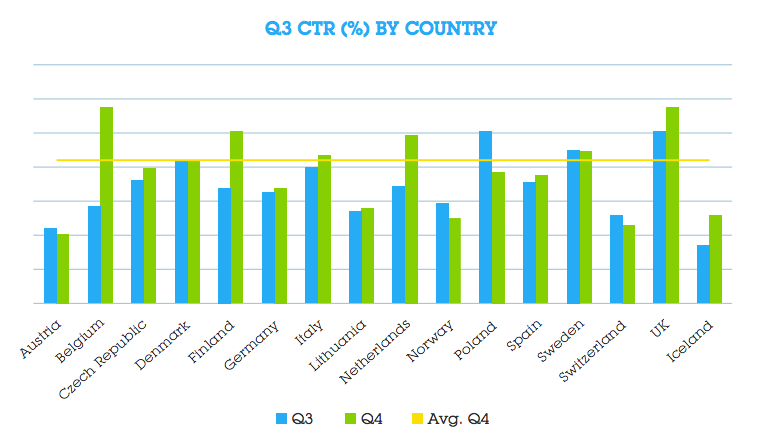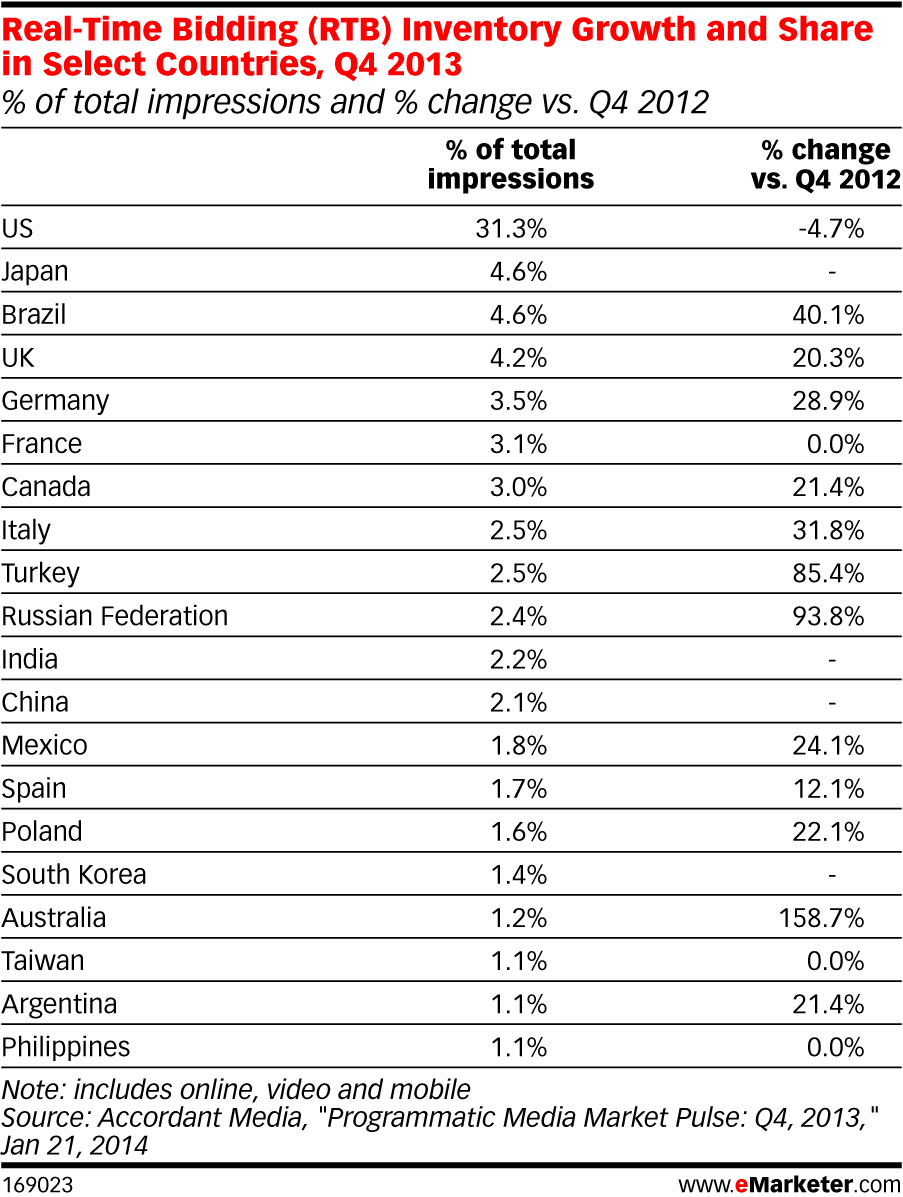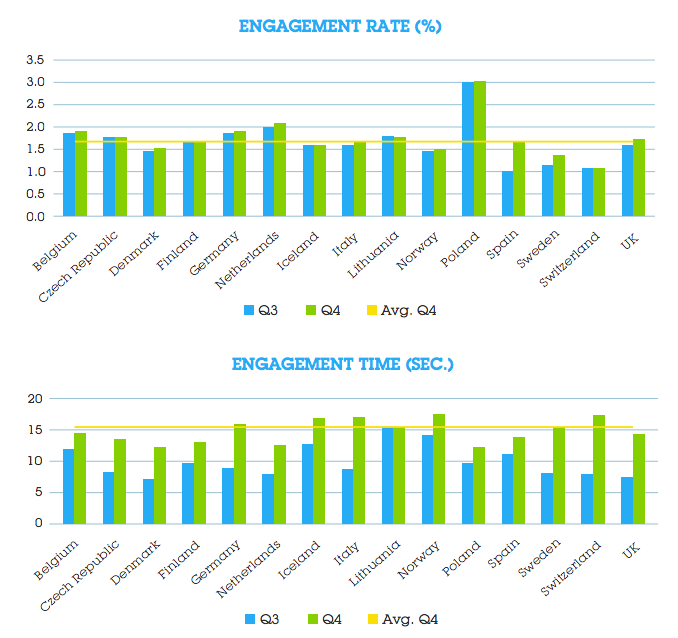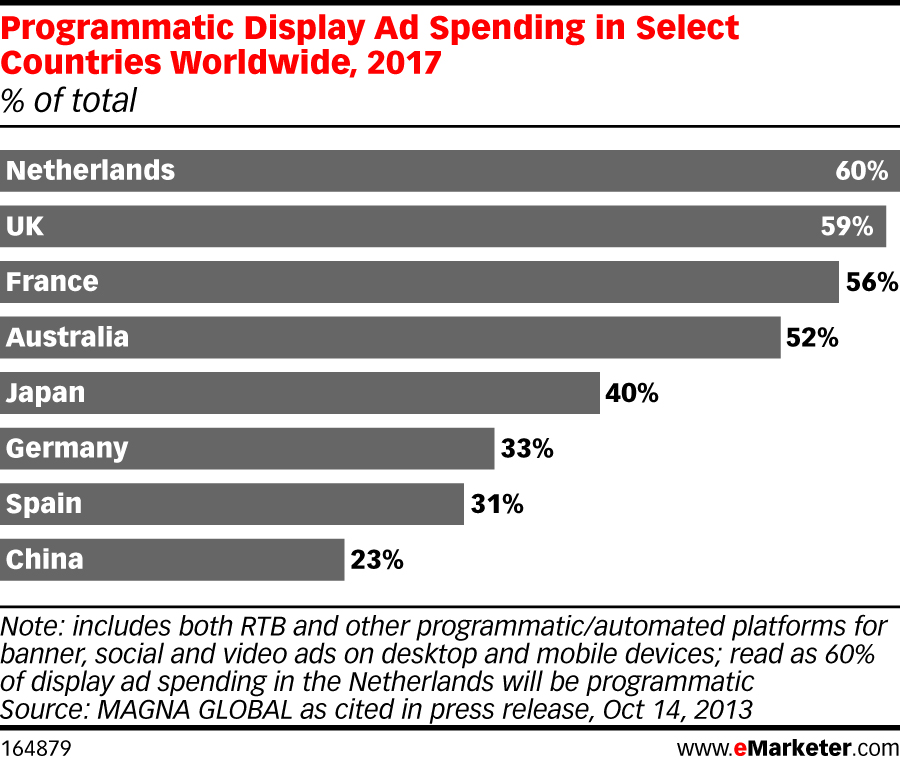German Media Players Primed For Automated Push
by on 11th Mar 2014 in News


German advertisers and publishers may currently lag smaller European economies, such as the UK and Belgium, in the uptake of real-time advertising, but separate studies show engagement rates among online audiencesthere are well above the European average, and the tide may be about to turn in the market.
The hesitancy of German publishers to trade their premium inventory via programmatic channels is a well-documented phenomenon, but statistics from Adform's latest quarterly report demonstrate the willingness among web audiences there to engage with interactive ad formats delivered via programmatic channels.
But with market insiders tipping the German programmatic market to double in 2014 – primarily off the back of the partnership struck by AppNexus and German sales house United Internet Media (UIM) – due to publishers changing their mind from their previous position of leaving ‘distressed’ inventory unsold, rather than offloading it at a discount price (for fear of undermining their business models).
Although click-through rates (CTR) in Germany lagged well below the European average throughout the year - the UK and Belgium is where they registered the highest (see chart below) - other metrics suggest Germany audiences react positively to ad formats targeted using real-time bidding (RTB).

Engagement rates outperform spend
Engagement metrics presented by Adform suggest that German audiences are now willing to engage with rich media display ad formats, with Adform further suggesting this makes such formats ideal for marketers interested in building brand awareness.
The figures show engagement rates (i.e. the amount of users exposed to an ad unit and then interacted with it) was just under 2% (making audiences there the third-most engaged in Europe) during the fourth quarter, with this figure well above the European average of 1.6% (see chart).
Meanwhile, the average number of seconds that German audiences spend engaging with such ad units numbered 16 (again slightly above the European average) during the surveyed period. This makes German audiences the fourth-most engaged audiences behind Switzerland, Norway, Italy and Iceland (see chart).
Adform’s analysis of the findings reads: “The increase in both engagement rate and time throughout the year point to another significant trend: a shift in programmatic campaigns from performance and retargeting campaigns to more personalised and awareness-raising campaigns, as evidenced by stronger demand for rich media inventory and higher engagement rates and times.”
Andreas Rau, Unique Digital (Germany), head of performance intelligence, says: “RTA in Germany is growing quickly and volumes are increasing. Advertisers are moving from retargeting and performance to branding campaigns.”
Programmatic video
Adform forecasts that increased amounts of video inventory in particular will further boost both the volume of advertisers willing to spend their brand budgets (typically reserved for TV) as well as the amount they are willing to spend on such ad units (which should be good news for publishers).
Adform’s analysis continues: “Newer programmatic rich media formats and video inventory will enable marketers to launch innovative and engaging campaigns. We expect rich media campaigns to surge in 2014, along with engagement rate and engagement time.”
However, statistics presented by Coull (which integrates video ads into premium publisher content), suggest the German market ranks lowly in terms of the number of online video audiences will to share content with their social audiences.
The analysis of online activity from across 57 countries Germany was 45th in the list of top-sharing video nations, with its share-rate 2.5 times less than the global average, giving a more sober take on the prospects of the German programmatic market in 2014.
Irfon Watkins, Coull CEO, says: “Understanding these trends is critical to driving effective marketing campaigns. Too often, ad spend fails to consider the sharing potential of videos.
“However, if digital publishers track sharing patterns and measure how their audiences engage with content, this insight can be used to inform not just their own content strategy, but to connect brand advertisers with the type of video content that really resonates with their target market.”
This chimes with well-placed ExchangeWire sources which contest that the German market has experienced a bit of a slowdown in recent months, some claiming the (economically blighted) Spanish market has been more vibrant for programmatic media traders in recent months.
Programmatic momentum
But despite Coull’s findings, and anecdotal evidence, separate statistics from analyst houses indicate that media owners there are starting to match advertisers’ willingness to spend budget programmatically. This is in addition to recent reports by German media giants Axel Springer and the Germany-based, pan-European broadcaster RTL Group, indicate the floodgates are about to open in the long term.
A report published by Accordant Media in January this year, suggested that 3.5% of total ad impressions in Germany were generated by programmatically traded ad units behind the UK, Brazil, Japan and the USA (which saw 31.3% of ad impressions generated by programmatic).
While the US statistic generates just how far the German programmatic industry has to go before being considered as a market leader, the fact that the market there grew 28.9% year-on-year in 4Q 2013, indicates its momentum (see chart). 
However, separate forecasts from research firm Magna Global indicates the German programmatic market is about to undergo a period of unparalleled growth, with over a third of all display ad budgets there being spent programmatically (see chart).
Last week German media owners RTL Group and Axel Springer disclosed the scale of their digital ambitions during their financial filings, with the broadcaster claiming how digital revenues jumped 26% in the year to 31 December, 2013, to hit €236 million (and helping to offset an overall revenue decline).
Meanwhile, Axel Springer chief executive Matthias Doepfner, used his company’s announcements to declare his company’s intention to make further acquisitions in the digital sector. Although no specific mention of the programmatic sector was discussed publicly at the conference, it must surely form part of its strategy.
Unique Digital’s Rau, adds: “With this development [the move to more brand-led advertisers booking programmatic campaigns] I see increased demand for qualitative data, additional formats as well as cross-channel (cross-device) tracking and attribution.
“Measurement and optimisation KPIs need to be aligned with the different objectives along the funnel. I think that agencies and publishers will continue to cooperate in search of effective models. This is the next step towards programmatic premium.”
Ad Trader Conference

Rau will be speaking at the Ad Trader Conference hosted in Berlin on 8 April, alongside other industry luminaries including: Lothar Prison, Vivaki chief digital officer, Boris Kurschinski, Google, head of AdX buyer development, Mike Klinkhammer, and eBay Advertising managing director. Click here to see the full list of speakers and ticket booking options.
AdvertiserCreativeDACHDigital MarketingDisplayExchangeMartechMedia SpendPerformanceProgrammaticPublisherTradingTrading DeskVideo










Follow ExchangeWire